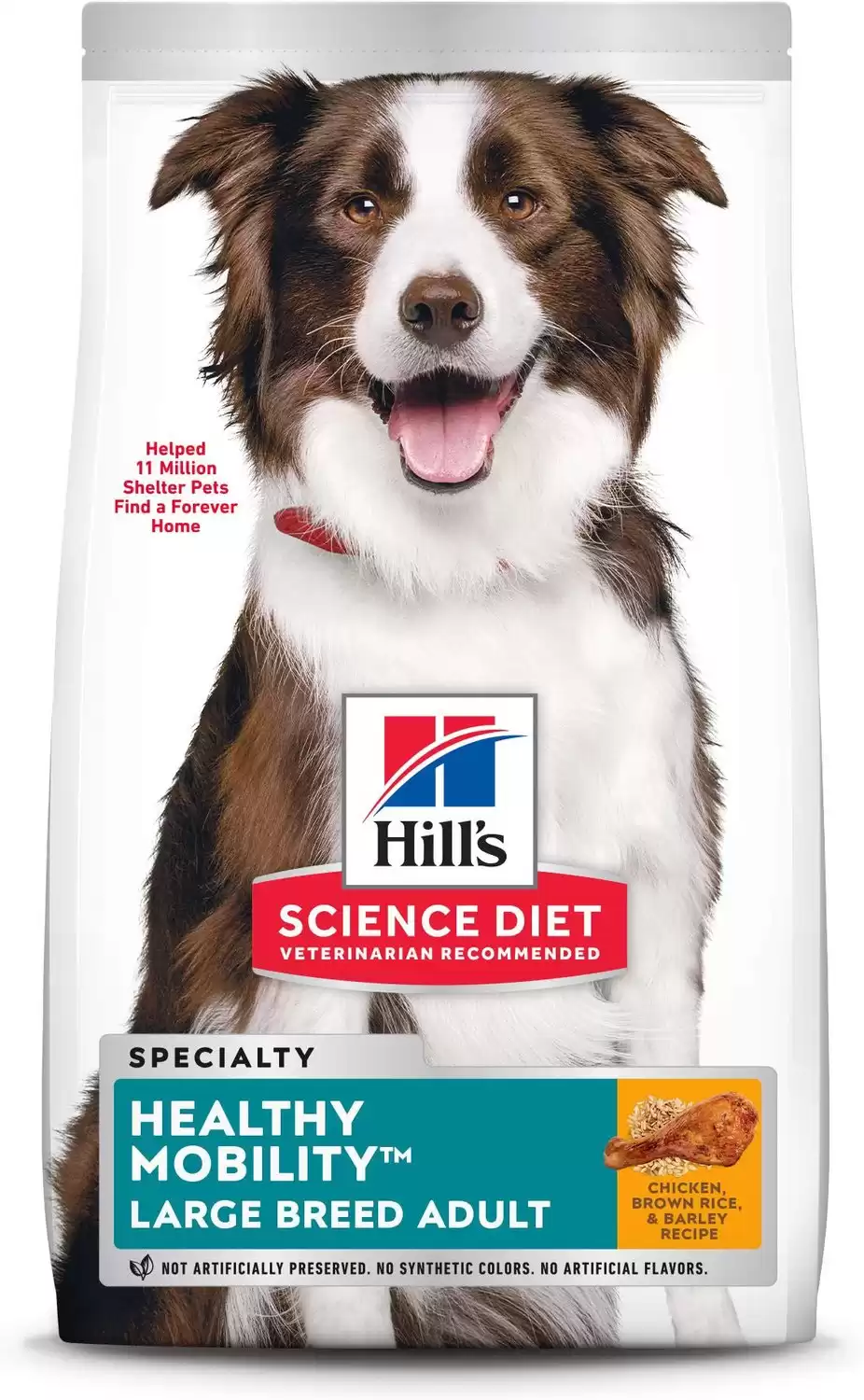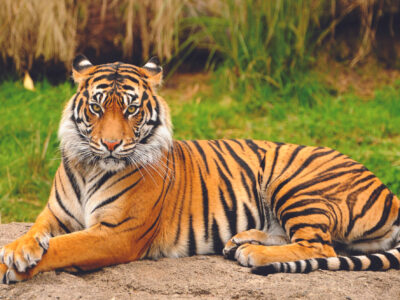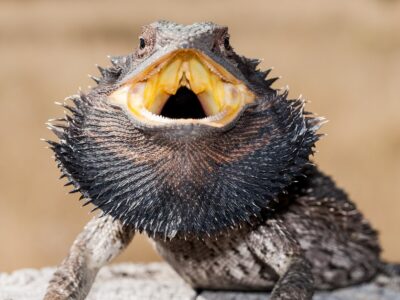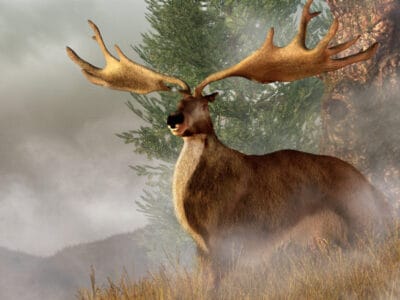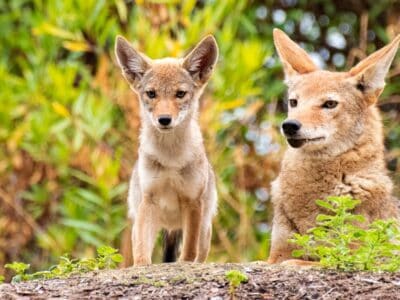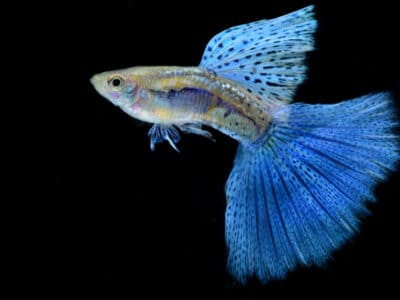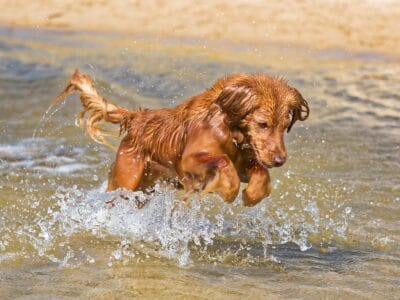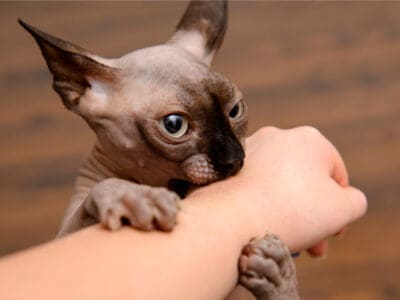Labraheeler
Canis lupus
A Labraheeler is a good choice for a watchdog as it do whatever it can to keep its family safe!
Advertisement
Labraheeler Scientific Classification
- Kingdom
- Animalia
- Phylum
- Chordata
- Class
- Mammalia
- Order
- Carnivora
- Family
- Canidae
- Genus
- Canis
- Scientific Name
- Canis lupus
Read our Complete Guide to Classification of Animals.
Labraheeler Conservation Status
Labraheeler Facts
- Fun Fact
- A Labraheeler is a good choice for a watchdog as it do whatever it can to keep its family safe!
- Temperament
- Loving, affectionate, and energetic
- Diet
- Omnivore
Labraheeler as a Pet:
- General Health
- Energy Level
- Shedability
- Trainability
- Intelligence
- Tendency to Chew
- Size
- Family and kid friendliness
- Yappiness / Barking
- Moderate
- Separation Anxiety
- High
- Preferred Temperature
- Average climate
- Exercise Needs
- High
- Friendly With Other Dogs
- Moderate
- Pure bred cost to own
- $750 to $1,000
- Dog group
- Non-sporting
- Male weight
- 35-80 lbs
- Female weight
- 35-80 lbs
This post may contain affiliate links to our partners like Chewy, Amazon, and others. Purchasing through these helps us further the A-Z Animals mission to educate about the world's species.
View all of the Labraheeler images!
These are athletic dogs so training them can often be a fun activity. They don’t tire easily and can train for hours at a stretch.
A Labraheeler is a hybrid dog that has been created with a mix of the Labrador Retriever and the Australian Cattle Dog, which is also known as the red or blue heeler. Labraheelers are known to make excellent pets for active households with their incredible intelligence and warm smiles. Labraheelers benefit from early socialization, making it easier for them to bond with the other animals in the home. They often suffer from separation anxiety and do not usually like to be left alone. Their fur is usually chocolate brown, black, yellow, or white, but they can come up in a variety of color combinations (due to their genetics) and may appear quite different from each other.
See all of our expert product reviews.
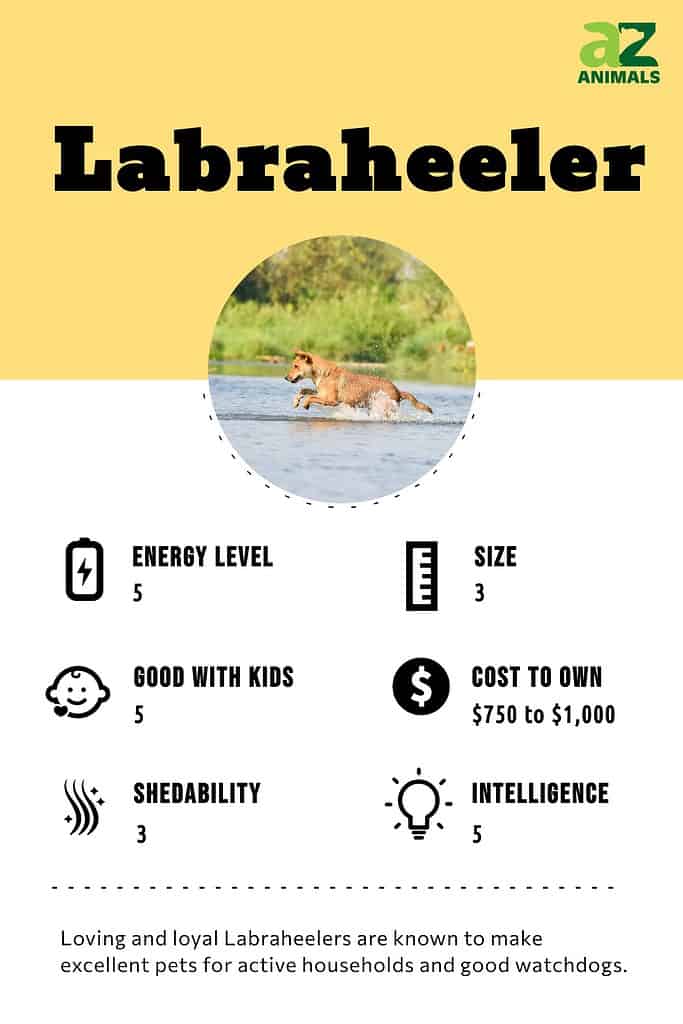
3 Pros and Cons of Owning a Labraheeler
Anyone that wants to get this type of dog should get a clear understanding of both the good and the bad. Here are a few pros and cons of owning a Labraheeler:
| Pros! | Cons! |
|---|---|
| Affectionate: These dogs have a very affectionate nature and bond deeply with their family. | Separation anxiety: Labraheelers need a lot of attention and would not like it for you to leave them alone. |
| Loyal: Labraheelers are very loyal, ensuring that they are committed to the individuals that adopt and rescue them. | Health issues: Labraheelers have some concerning health issues like hip dysplasia and epilepsy, as well as hyperthyroidism. |
| Watchguard: If you need a dog that would be a good watchdog, this one would be a good choice. They will do whatever they can to keep their family safe. | Can hurt kids: These dogs can get a little rough sometimes while playing with kids, and their playful nature can lead to injury. |
Evolution and Origins
While the exact origins of the Labraheeler are uncertain, it’s likely that this breed developed in the 1990s, when designer, or hybrid, dogs became popular and breeders crossed many types of dogs.
The Labraheeler comes from working dog stock, as both of its parent breeds were originally bred to assist fishermen and farmers.
Labrador retrievers are descended from St John’s water dogs, which originated in Newfoundland in the 1500s and were used in the Labrador region of Canada. Due to their water-resistant coat, they helped haul in the catch of the day for fishermen, jumping into the water to retrieve fish that fell off the hooks or bringing in nets. Labradors began to be widely used as gun dogs in hunting once they were brought to England in the 1800s. These days, they make excellent service, therapy, police, and search and rescue dogs, and are a very popular breed as purebreds and hybrids.
The Australian cattle dogs take their name from their place of origin and are known as blue heelers or red heelers due to their coat colors and the technique they use to herd sheep of nipping at the animals’ heels. When English and European colonial settlers began to farm land in Australia in the 1800s, they realized their Smithfield Sheepdogs were ill-suited to the climate and terrain, so developed a hardier herding dog by breeding them with local wild dogs or dingos. The breed was further refined by crossbreeding with Blue Merle Border Collies, Dalmatians, and Kelpies, giving these dogs varied markings and abilities to work comfortably with larger cattle and horses. These heelers played a key part in growing the cattle industry, which became vital to Australia’s economy.
Health and Entertainment for your Labraheeler
See all of our expert product reviews.
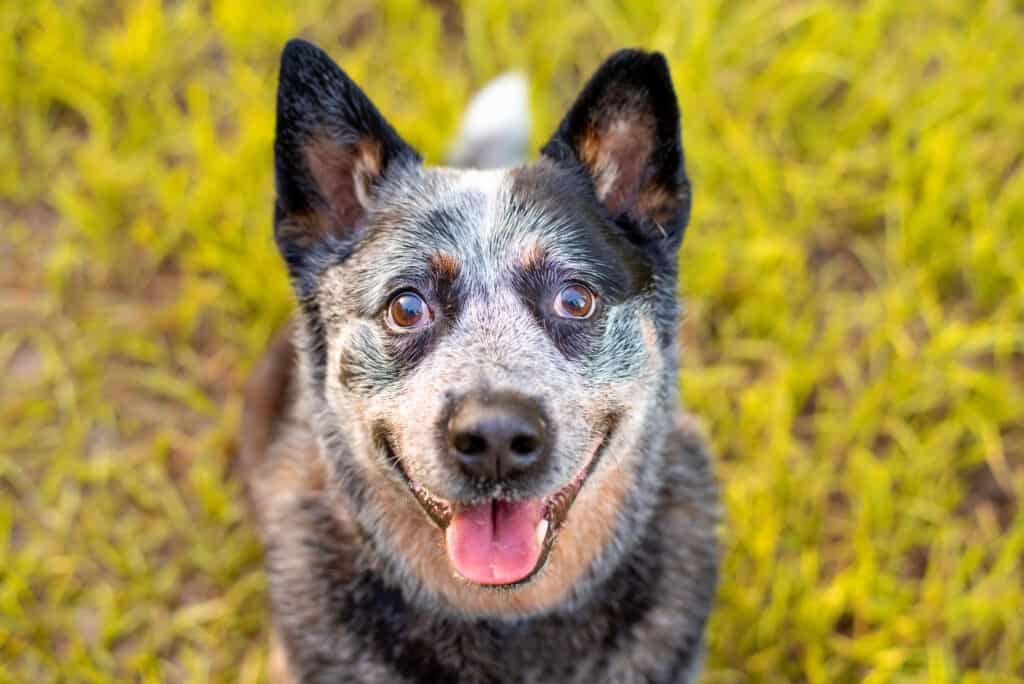
The Labraheeler’s parent breed the Australian cattle dog, or blue Queensland heeler, originated as a working dog.
©iStock.com/Tatyana Consaul
Size and Weight
Labraheelers are medium-sized dogs that can grow to around 17 to 24.5 inches in length. They weigh 35 to 80 pounds once are fully grown. They can come in coats of various colors, including black, brown, chocolate, yellow, and white.
| Height (Male) | 17 to 24.5 inches tall |
| Height (Female) | 17 to 24.5 inches tall |
| Weight (male) | 35 to 80 lbs |
| Weight (female) | 35 to 80 lbs |
Common Health Issues
Labraheelers suffer from some health concerns like their parent breeds, with one of the most common being hip dysplasia. This condition occurs when the hip bone is not positioned properly, causing the dog to limp and endure a lot of pain.
This breed is also prone to epilepsy, which results in seizures. Some Labraheelers also experience hyperthyroidism, preventing their thyroid gland from functioning properly.
Ultimately, common health problems that Labraheelers suffer from include:
- Hip Dysplasia
- Epilepsy
- Hyperthyroidism.
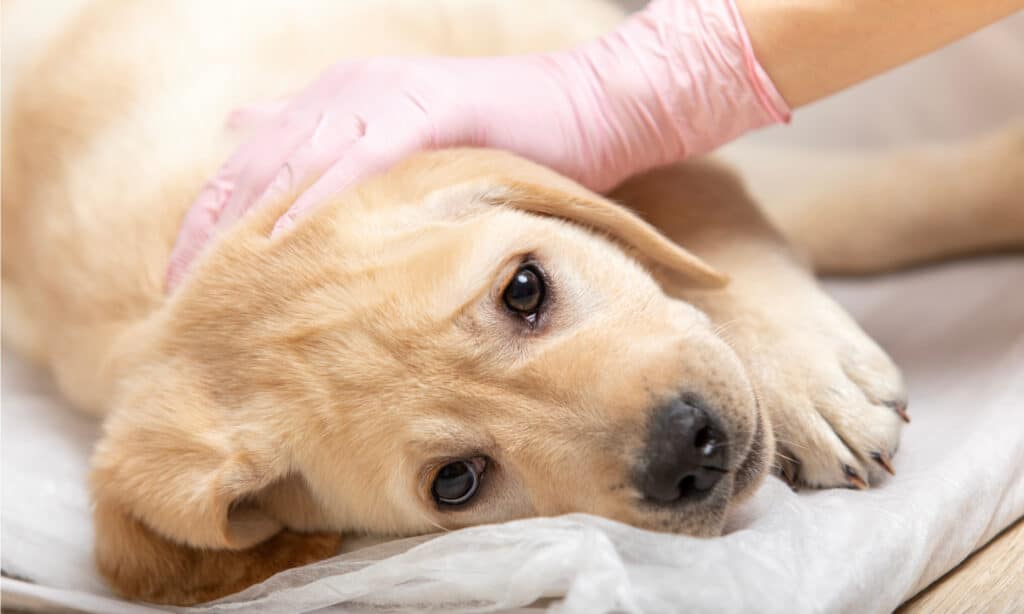
Labs and lab mixes are prone to hip dysplasia.
©Olya Maximenko/Shutterstock.com
Temperament
A Labraheeler loves being a part of an active household. This dog loves to run around and play games. They make amazing family pets. However, they also love attention, so they probably won’t be happy to see you leave them alone.
The nature of a Labraheeler is good and they can bond well with their owners. They are very loving and affectionate. They have loyal personalities, and they will do what they need to in the name of protecting their family as a watchdog for them.
They must be socialized early on in life for them to develop good habits and to be able to train easily. They would get along with you in no time and are especially affectionate towards children.
Around children, their energy levels are to be monitored as they can sometimes get very rough and can eventually end up hurting little ones in your house.
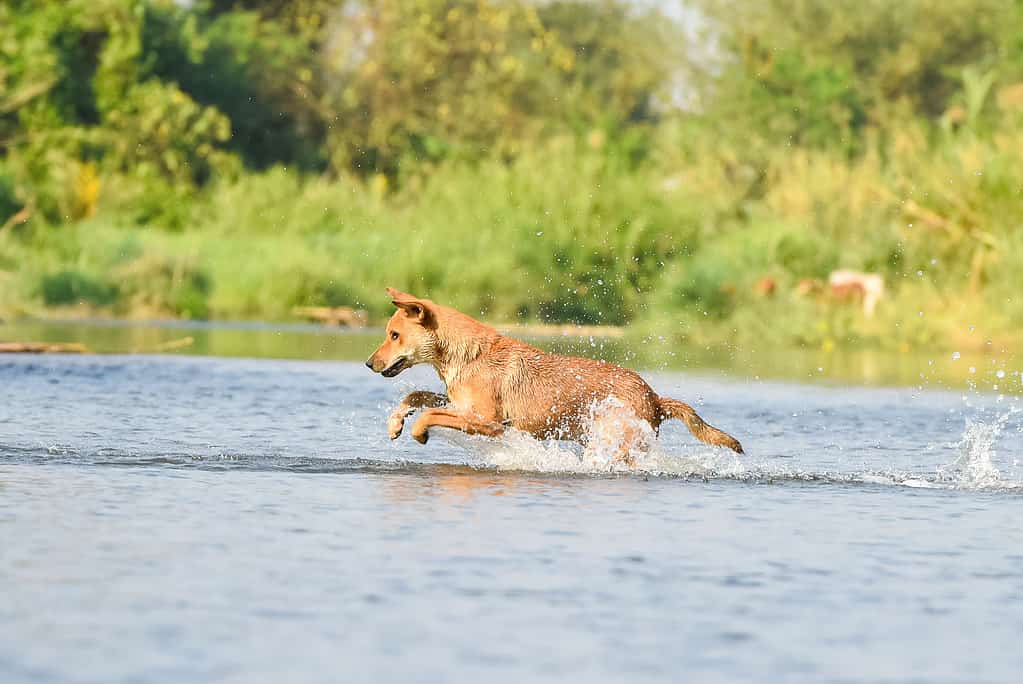
A Labraheeler is very active and loves to run around and play games.
©iStock.com/DjMiko
How to Take Care of Labraheelers
Since they are not a purebred breed, these dogs are rather easy to find in adoption centers and rescue shelters. When you plan to bring a Labraheeler into your life, you have to make sure that you know how to take care of them, including what you need to avoid entirely. Here are a few things that you need to keep in mind to take care of the Labraheeler.
The Best Dog Food for Labraheelers
You should feed your Labraheeler high-quality dry or wet food, though you might want to consult with a vet to see what suits them best. Always follow the directions on the food to determine the right amount of food for the weight and age of the dog. Senior dogs will need more moisture in their diet.
Most dogs (including the Labraheeler) need to have plenty of lean protein, fat, and fiber to keep their body strong.
One excellent choice for Labraheelers is Hill’s Science Diet Dry Dog Food, Adult Large Breed, Healthy Mobility for Joint Health.
This large breed dog food provides glucosamine and chondroitin for joint support to keep your Labraheeler spry and bouncy for a long time. There is an excellent mix of other vitamins and minerals including Vitamin E and biotin for skin and coat.
Check Chewy and Amazon for this product.
- Supports improved joint health in big dogs with EPA from fish oil
- Contains glucosamine and chondroitin for joint health
- Vitamins and minerals for strong bones in large dogs
- Made with natural ingredients
Maintenance and Grooming
Labraheelers are easy to maintain. Most of the time, they have short fur that is not too difficult to maintain. Brush their fur twice a week to keep the fur in a good condition without tangles or buildup of what they’ve already shed. Their coat comes in different colors, particularly chocolate brown, yellow, black, and white.
These dogs shed on a moderate level, but it can become worse during certain seasons. Some dogs might have floppy ears and would need their ear canals to be cleaned out weekly to avoid any infections.
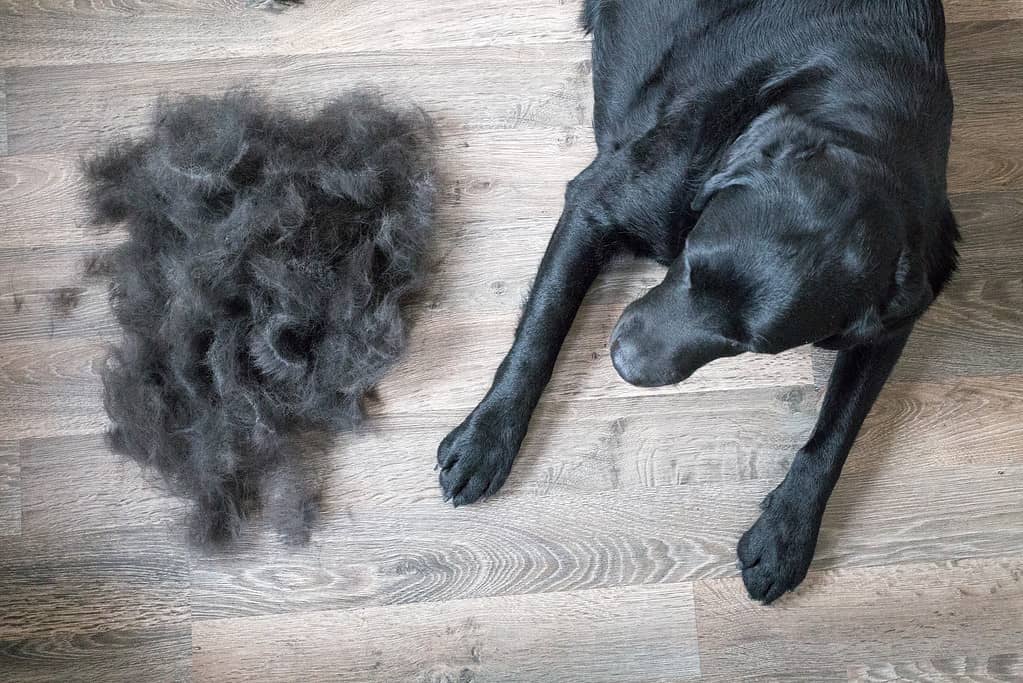
Like their Labrador parents, Labraheelers can shed a lot during certain seasons.
©iStock.com/Oskari Porkka
Training
Labraheelers are very eager to learn and smart in nature. They are therefore not difficult to train, but consistency is always the key to their lessons. They are athletic dogs so training them can often be a fun activity.
They do not tire quickly and can train for hours at a stretch. However, some Labraheelers can turn out to be stubborn so in such cases, you would need to set boundaries with them and teach them how to respect those.
Rewarding them for correct behavior also helps with Labraheelers. However, they can also be sensitive so they might not do very well with being punished or negative reinforcement.

As with many Lab hybrids, the Labraheeler is eager to learn and easy to train.
©Ljupco Smokovski/Shutterstock.com
Exercise
Labraheelers are athletic dogs, and both of their parents are working dogs. Therefore, the exercise requirements of this dog are high. This dog loves to hike, swim, jog, and work. They are also masters of several activities like flyball and agility.
These dogs need at least one hour of exercise every day. They would need space to roam around and do not like being confined to a room. If you live in an apartment, this breed may not be the ideal choice.
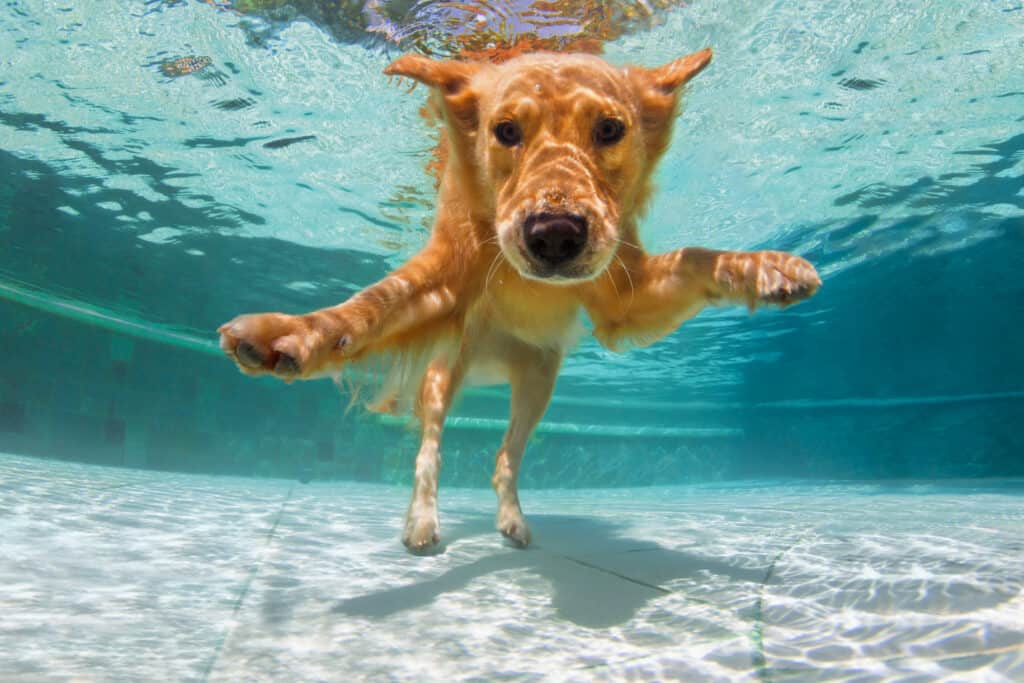
Labradors of all types are athletic and enjoy swimming.
©Denis Moskvinov/Shutterstock.com
Puppies
A Labraheeler puppy is adorable and will need a lot of your time and energy as it grows. They should be socialized very early on in life to help them avoid being hostile towards strangers and other pets.
Like their parent breeds, you would also want to train them from an early age so that they can develop good habits. Also, the diet for a Labraheeler puppy would be different than that of an adult.
You would need to feed a Labraheeler puppy smaller amounts of food spread across multiple meals as their tiny stomachs cannot take a lot of food at once.
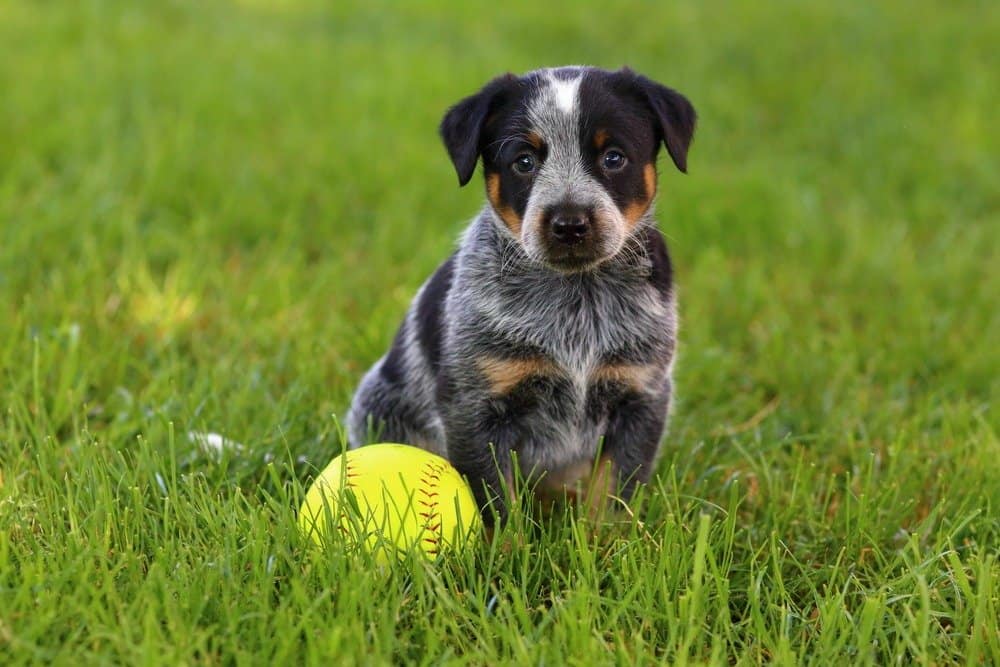
Like its parent breed the Australian Cattle Dog, a Labraheeler puppy should be trained from an early age.
©JLSnader/Shutterstock.com
Labraheeler and Children
Labraheelers are great with children, They are affectionate as well as loving and are especially playful around kids. However, their energy levels have to be kept in check while they are around children. This is because they can sometimes get very rough, potentially harming little ones in your house.
Dogs Similar to the Labraheeler
Here are some of the dogs that are very similar to Labraheelers:
- Labrador Retriever: These dogs are friendly and easy to groom. They are also the most popular dog breed, according to the AKC.
- Australian Cattle Dog: These dogs are also known as blue heelers and are friendly as well as intelligent in nature.
- Golden Retriever: These dogs are easy to train and are very sweet. However, they are known to shed a lot.
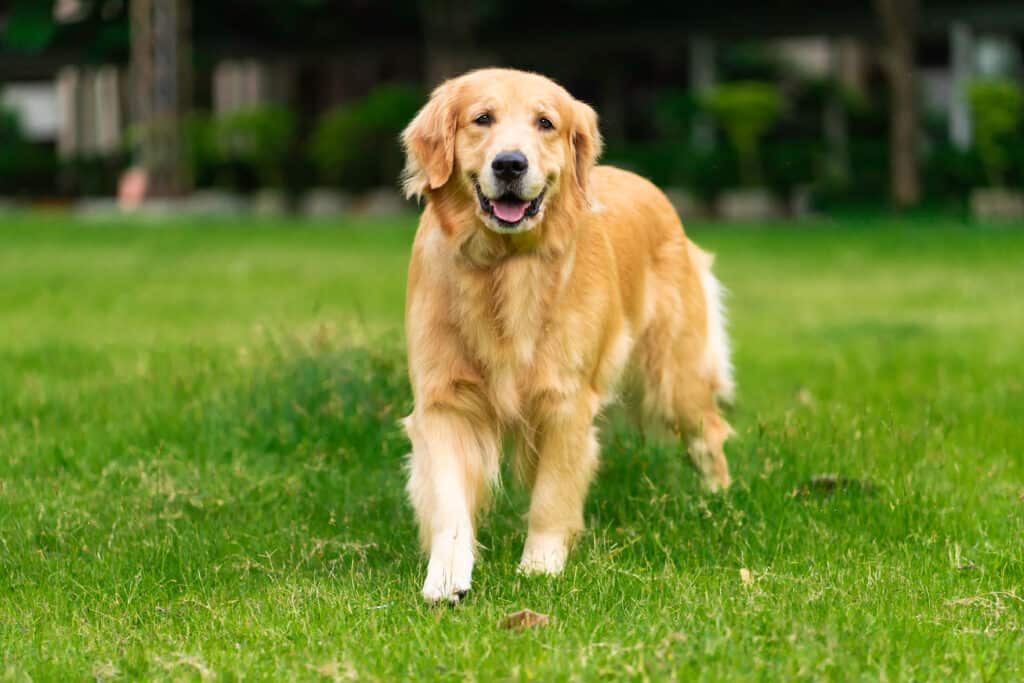
Golden retrievers are similar to Labraheelers but shed a lot.
©Burin P/Shutterstock.com
Famous Labraheelers
While there are no well-known individual Labraheelers since they are a relatively new breed, there are many famous dogs from parent breed Labradors and one notable Australian Cattle Dog.
Buccleuch Avon is said to be the ancestor of all chocolate Labs, belonging to the Duke of Buccleuch in the 1880s.
Endal was a renowned British Labrador Retriever service dog born in 1995, earning honors such as “Dog of the Millennium” and as the PDSA Gold Medal for Animal Gallantry and Devotion to Duty despite suffering from a debilitating joint condition.
Labs are a popular choice for dogs in TV series and movies, notably in John Grogan’s book and 2008 movie “Marley & Me.”
Bluey was a female Australian Cattle Dog who was born in 1910 and lived to 29 years and 5 months, and until 2023 held the Guinness World Record for the oldest dog to ever live.
Popular Names for the Labraheeler
Here are some of the popular names for your Labraheeler:
- Autumn
- Apollo
- Ammo
- Bailey
- Bastian
Labraheeler FAQs (Frequently Asked Questions)
What is a Labraheeler?
A Labraheeler dog is a hybrid dog which is a mix of a Labrador retriever and an Australian cattle dog.
How much does a Labraheeler cost?
The price of a Labraheeler puppy would be anywhere between $750 to $1000. You can expect an additional price of $1000 for its maintenance. You can find them in adoption centers and/or rescue shelters.
How big will a Labraheeler get?
In size, Labraheelers can get about 17 to 24.5 inches.
What is the lifespan of a Labraheeler?
The lifespan of a Labraheeler is about 12 to 16 years.
Is a Labraheeler a good family dog?
Yes, Labraheelers are great family dogs. They are affectionate and loyal and are especially playful with kids.
Thank you for reading! Have some feedback for us? Contact the AZ Animals editorial team.
Sources
- Dog Zone / Accessed March 22, 2021
- Doggie Designer / Accessed March 22, 2021
- Pet Place / Accessed March 22, 2021
- The Labrador site / Accessed March 22, 2021






